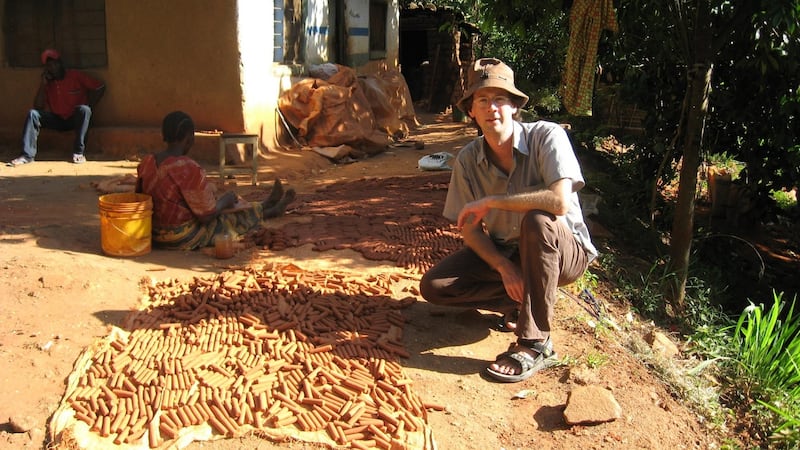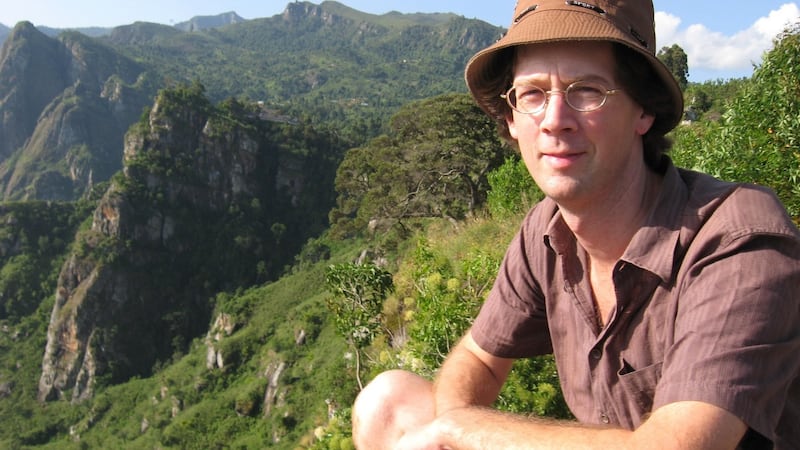I could never have predicted a year ago that I would be writing this article proclaiming my intention to give up flying abroad on holidays.
For 30 years my life has centred on flying – living in Africa, India and South America for extended periods from 1989-1996, then making travel documentaries for TG4 and the Travel Channel for eight years in China, the Middle East, Greenland, India, South America and eastern Europe. From 2006-2012, I wrote a series of travel books, and I’ve been a travel journalist with regular travel slots on Today FM, Newstalk, RTÉ and 2FM for the last decade. I’ve also written more than 200 travel articles for this newspaper.
My plan was to be in Ethiopia right now, writing about community tourism initiatives. It was to be a follow-up article to one I wrote in these pages in 2009, that turned out to be the most influential piece I've ever written. It inspired more people to travel than any of the pieces I've written on Cuba, Morocco, Ghana, Mexico, Lebanon, Mozambique, Uttar Pradesh or Borneo. The wonderful community tourism charity that I wrote about, Tesfa Tours (www.tesfatours.com), has opened new hiking routes in spectacular locations, and I knew I'd end up writing a gushing article that would compel yet more people to travel.
It had to stop. I’m responsible for coaxing too many people to fly already. Have I the soot of their carbon emissions on my hands? Either way, I cannot continue to promote the further pollution of this planet, poisoning it for future generations just so I can take free holidays and get paid to report on them.
My instinct was to give up travel journalism entirely, but that could be seen as defeatist. Instead, I’ve asked the main media platforms I appear on to allow me to focus more on train and ferry travel throughout Europe, and that if I do report on holidays that require flying, I can counterbalance it with information about the damage these flights are doing to our planet, and direct people to information about carbon off-setting, and ways to fly less.
From here on in, my intention is to provide information on viable, enjoyable train and ferry holidays. I will be taking train holidays to Belgium, Germany, Finland, Croatia and Italy throughout 2020 and 2021, and reporting on them. There’s even a plan to get to Iceland by taking a train and ferry to Hirtshals in Denmark via Hamburg, and then a ferry from there via the Faroe Islands to Iceland.

I’m still coming to terms with the repercussions of flightless holidays. Ending my winter sun holiday is the greatest regret. For the last 30 years I’ve travelled somewhere warm for a few weeks each January. Last year was Lebanon, before that was Tanzania, Peru, Egypt, Turkey, Mexico, etc, right back to a glorious fortnight of swimming in the warm Atlantic in Togo, west Africa, in January 1989.
But, then it dawned on me that I hadn’t actually flown to Togo. I had driven there in the back of an ex-army truck from the south of England across the Sahara and through west Africa. Not flying didn’t mean I had to deny myself winter sun. And so, as you read this I should be lying on a beach in the south of Spain, having travelled by train and ferry from Dublin, via Paris and Barcelona.
I should admit that I am not giving up flying entirely. I will still take occasional flights for specific film projects and to tour my theatrical shows abroad, if I think the trip is justified. I’d love to be able to be able to sail across the Atlantic as my grandparents’ generation did, but a ticket for Cunard’s Queen Mary 2 costs €925 for a seven-night, one-way sailing from Southampton to New York (with a home flight included), and travelling as a passenger on cargo freighter costs more again – roughly €100 per day for at least nine days one-way.
The question is, how best to deal with these work-related flights, and how to alleviate their impact? I’m still grappling with this, but as a start I’ve set myself a carbon quota: permitting myself the equivalent of one return transatlantic flight (Dublin to Los Angeles) every two years. This releases 2.3 tonnes of carbon into the upper atmosphere for just my seat on the plane (the same amount of carbon would be released by four return flights to Malaga, or six to Berlin). It’s equivalent to a quarter of the entire annual carbon emissions of an Irish person.
Carbon-offset programmes are notoriously complex and divisive
Next, I’ll need to find a viable, efficient carbon-offset project that pledges to capture the greenhouse gases emitted by my travel through some other method. I planted 12,000 trees on my land 20 years ago, each of which should have captured a tonne of carbon within another 20 years. But I didn’t plant those to assuage my future guilt. I’ll need to find new sources of carbon capture to offset any future flights.
As it happens, carbon-offset programmes are notoriously complex and divisive, as the promises some programmes have made to sequester carbon have not been delivered. Some commentators liken them to the Christian practice of paying for indulgences to get absolution from sins, or paying someone else to be faithful to your spouse while you continue your infidelity.
That said, carbon-offset programmes have improved in recent years, and those that have been verified and accredited by the likes of the Gold Standard Foundation are now pretty dependable. You can choose between supporting projects that capture methane gas at landfill sites or distribute efficient cooking stoves to communities in developing countries that would otherwise have to chop down trees to burn on inefficient, carbon-emitting fires.
There are also projects that help fund the cost of windfarms, biomass facilities and combined heat and power plants. These are often profitable undertakings, and the more reputable offsetting companies pledge to reinvest a proportion of their profits into more carbon-capturing projects.
For a more direct way to ensure carbon is removed from the atmosphere, you could buy and rip up carbon credits from an emissions trading schemes, or start planting trees in your locality – although the challenge here is to ensure the trees are never chopped down again, or at least when they are that the timber is used for something long-term, so that the carbon isn’t released once again.
One factor worth checking is whether the carbon captured in the project you support would not have been captured by some other method anyway. If you help pay to plant a forest which a forester would have planted anyway, you are just enriching them, and not ensuring any additional carbon capture. The Gold Standard Foundation takes the view that only projects in countries that don’t have emission reduction targets under the UN’s Kyoto Protocol (primarily developing countries) should be supported, as the rest have a duty under international law to reduce carbon emissions without charitable donations to help them.
The aspiration is that this flight guilt money we pay will support developing countries to leapfrog the petroleum-based technologies of richer nations, so that they don’t make the same mistakes we did.
The one thing that does sadden me, though, is that younger people might never get the chance to learn about the farthest reaches of the world by travelling through them
The Irish charity, Vita, won an Environmental Finance award in 2018 for Best Individual Carbon Offset Project. Its Vita Green Impact Fund works to provide four million people in five countries in Africa with sustainable and affordable water, energy and forestry. The project will generate up to four million tons of annual carbon emission savings, which they can then sell on voluntary carbon markets with the income used to repay investors, and the surplus used for reinvestment back into the communities which created the emissions savings in the first place. It is a clever and equitable model of social and climate justice, that also helps deliver on the UN's sustainable development goals.
I am aware that I am still in the initial shock stage of dealing with the consequences of a life without exotic holidays. It’s a time of practical funeral arrangements, before the deep mourning sets in. I’ve never visited New Zealand or Japan or Australia, and it looks like I never will. But right now, I’m excited about the prospect of exploring Europe by train.

The one thing that does sadden me, though, is that younger people might never get the chance to learn about the farthest reaches of the world by travelling through them.
Travel has been the greatest positive influence on my life. It has taught me more about myself and the mystery of existence than any university course or book. I am profoundly indebted to it, and I believe that if flying becomes restricted to those doing communal good, such as medical, diplomatic, educational work, etc, then there should be an allowance made for young people who wish to fulfil worthwhile travel projects abroad. They should certainly be prioritised over the frequent flyers who hop like demented fleas between airports for inconsequential business meetings that could be done via video-conferencing.
It’s a bitter pill to swallow, seeing these besuited ones drinking free Sauvignon Blanc in elite airport lounges, while I sacrifice the thing I love most in this world.















